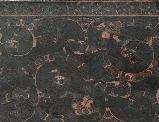Silver Dish Medical Publication of Findings in Rizhao

In a groundbreaking discovery in Rizhao, China, archaeologists have uncovered a significant Silver Dish artifact believed to be from the Han Dynasty (202 BCE – 220 CE). This exceptional piece, measuring approximately 20 centimeters in diameter, provides unprecedented insights into ancient medical practices and the advanced techniques used during that period.
The dish is adorned with intricate patterns and symbols that experts have been deciphering. These markings offer clues to its purpose as both a ceremonial object and a tool for medicinal applications. The team of researchers from Huazhong University of Science and Technology (HUST) has documented their findings in a detailed report, which has now been published in a leading archaeological journal.
According to Professor Liang Wei, who led the excavation team, the discovery provides "a glimpse into the sophistication of medical knowledge and practice in early Chinese history." The Silver Dish was found alongside other artifacts, including pottery shards and bronze tools, suggesting that it was part of a larger collection of items used by healers or shamans of the era.
The publication of these findings marks a significant milestone in the study of ancient medicine and cultural practices in East Asia. The dish itself will be displayed at the Rizhao Museum for public viewing and further research.
This discovery has already sparked widespread interest among scholars and archaeology enthusiasts worldwide. It promises to shed light on the interconnectedness of traditional Chinese medicine and the socio-political landscape of ancient China.
 LongStory.Asia The Digital Archaeological Portal
LongStory.Asia The Digital Archaeological Portal